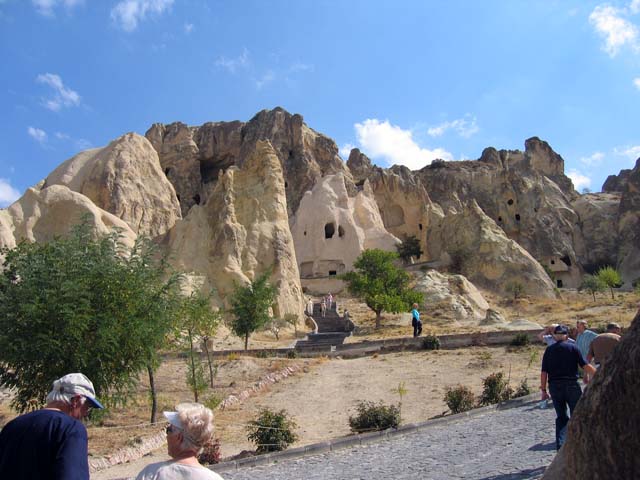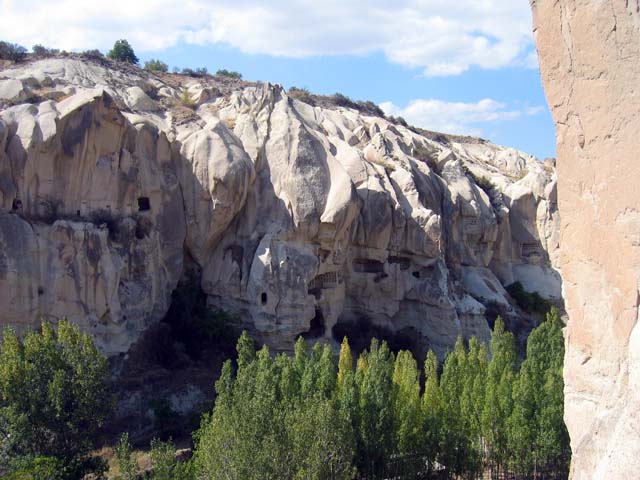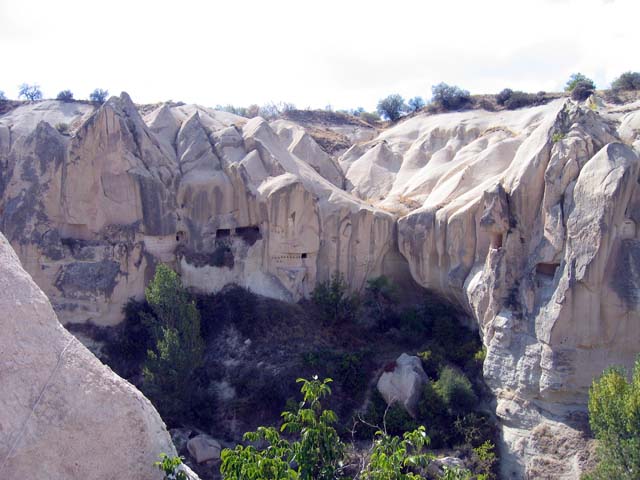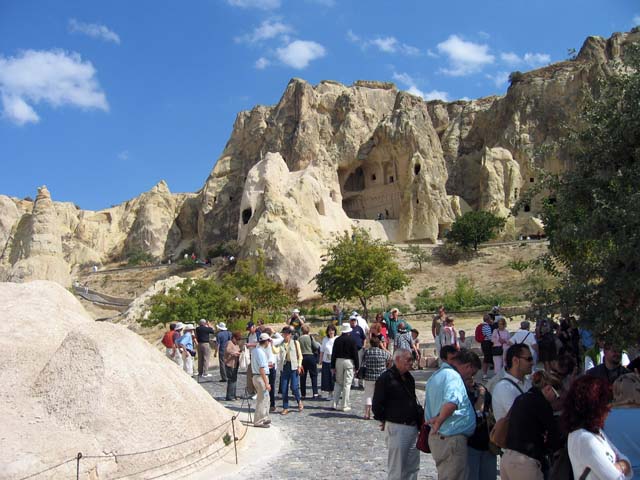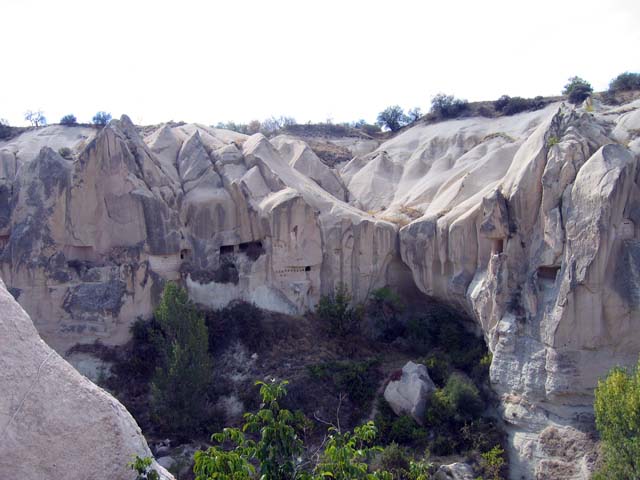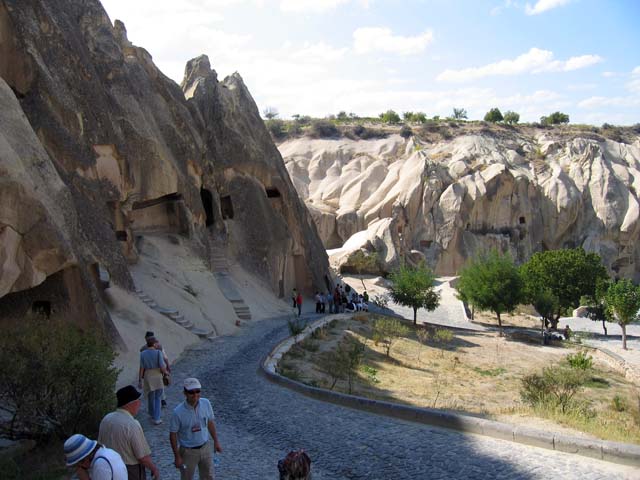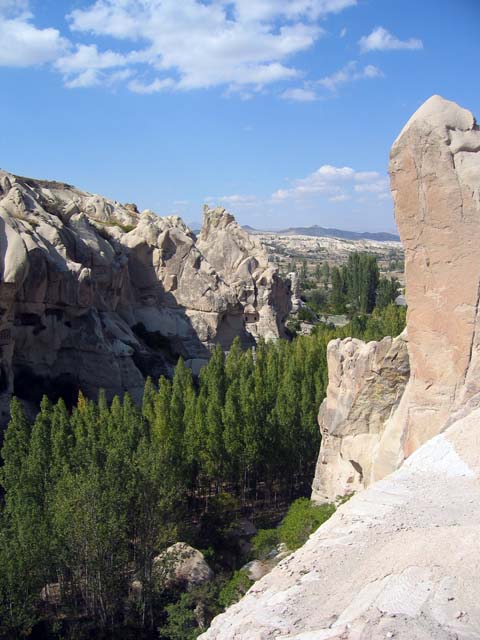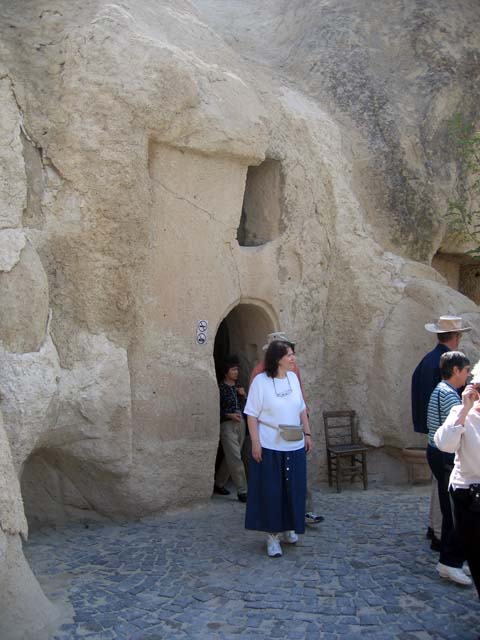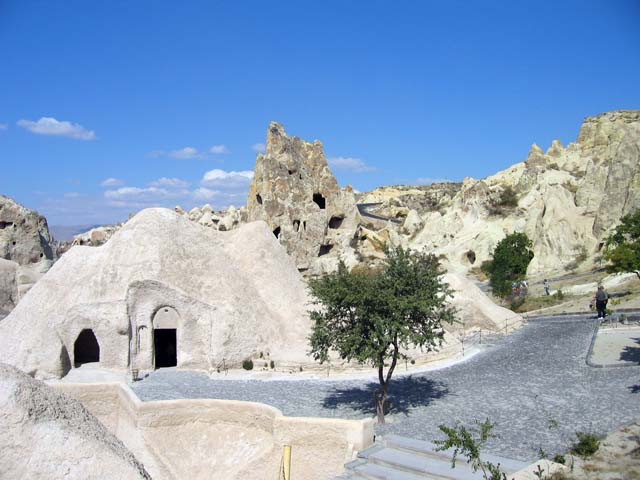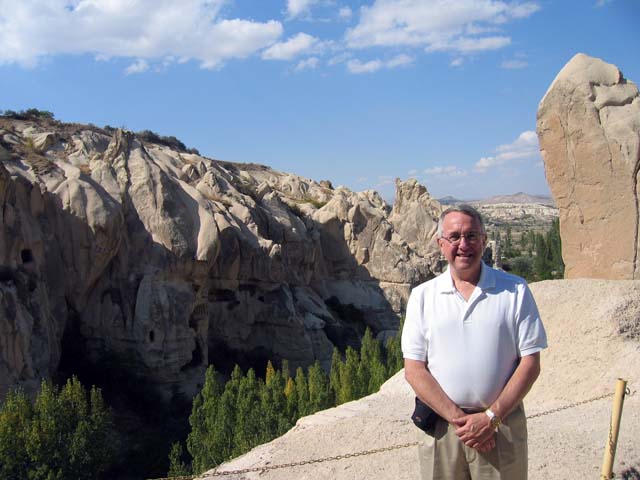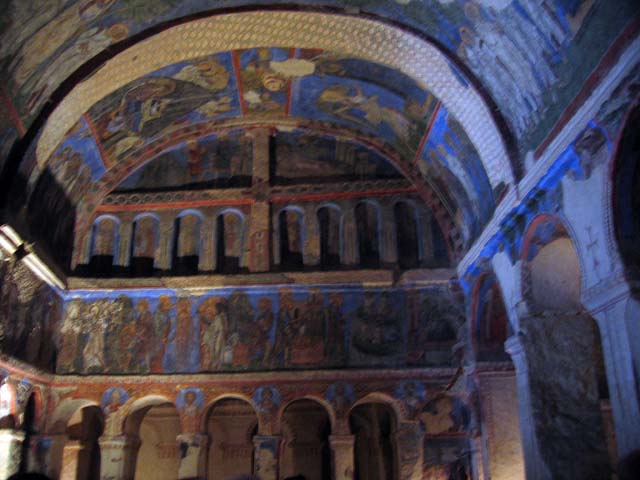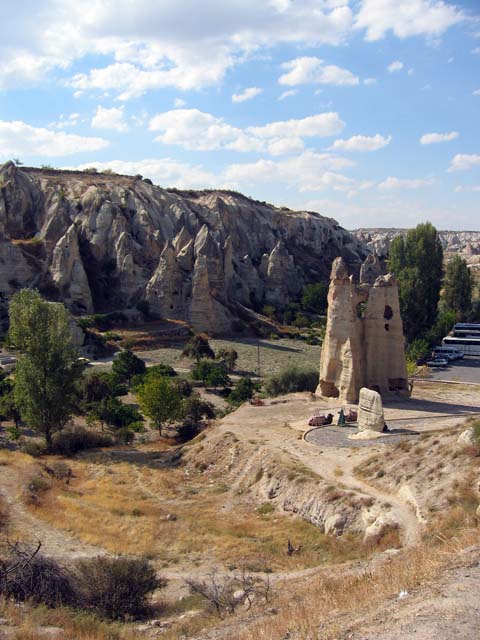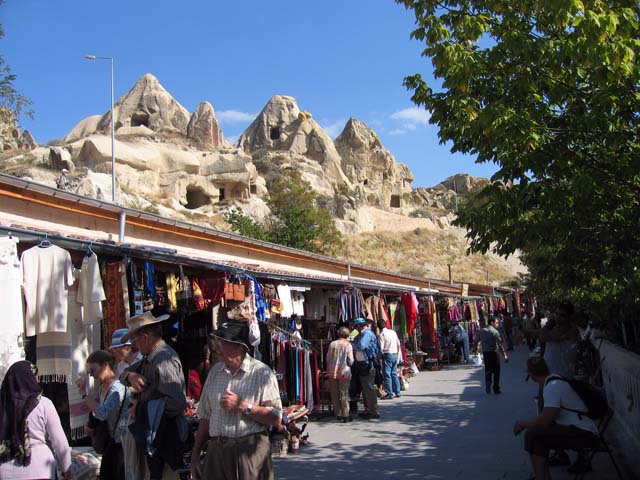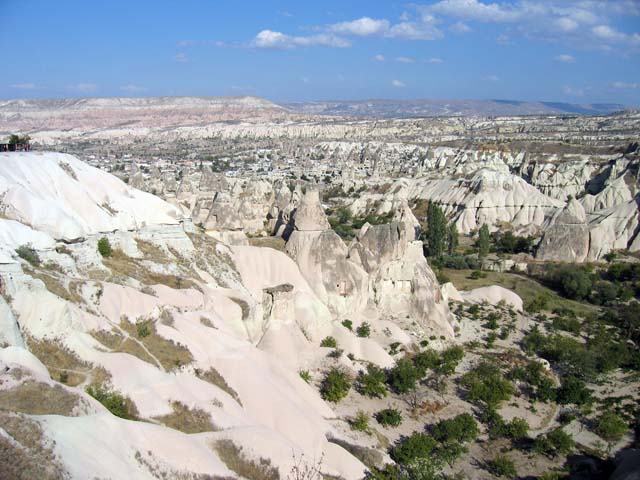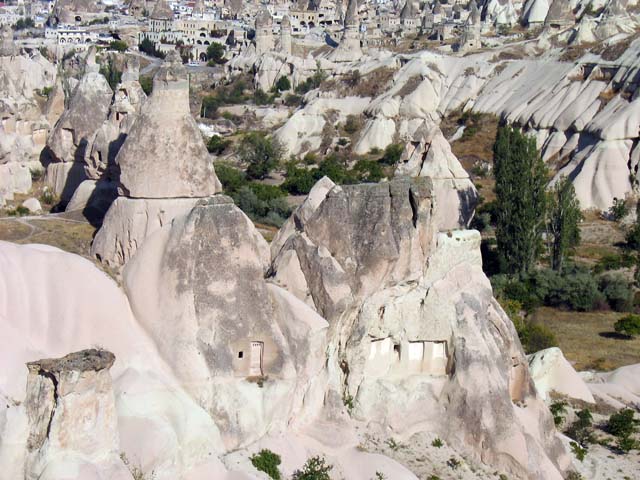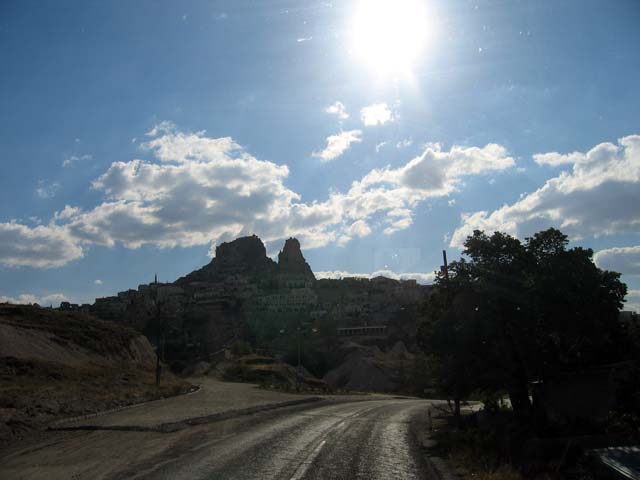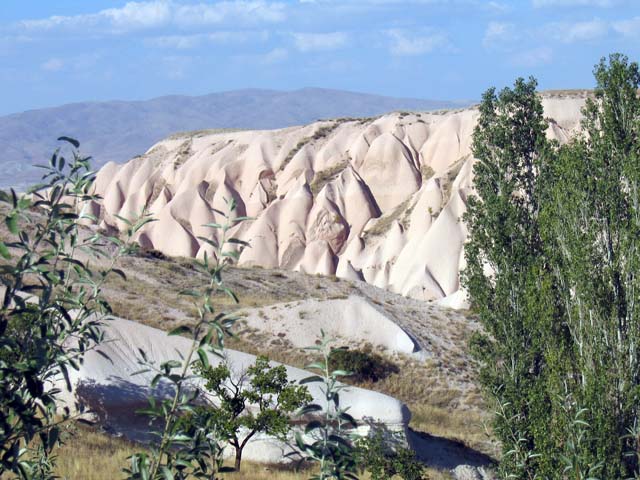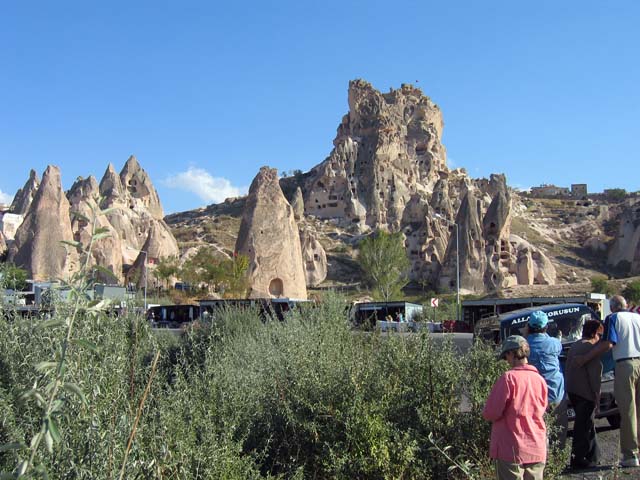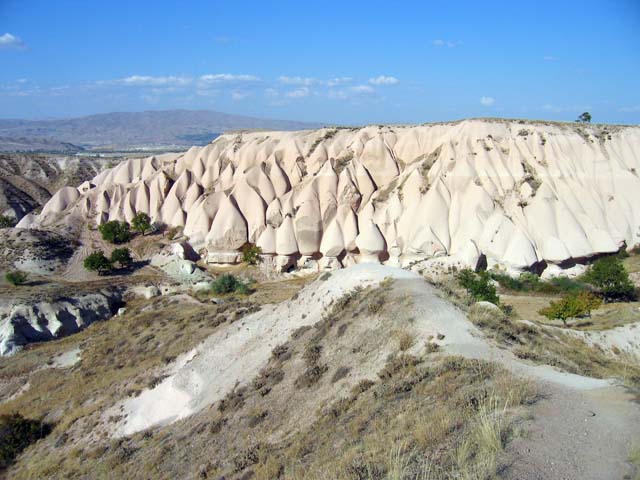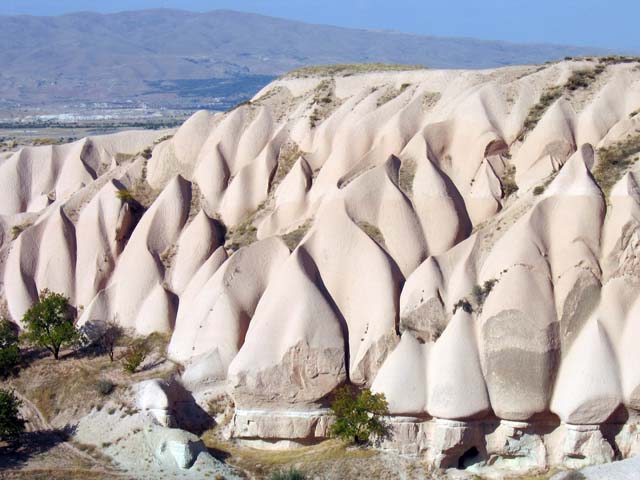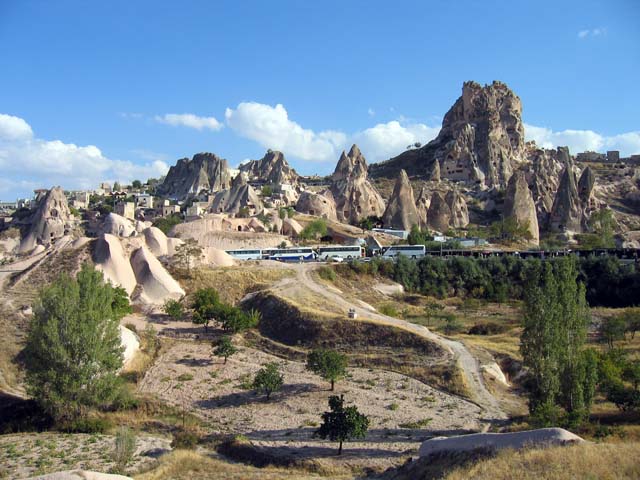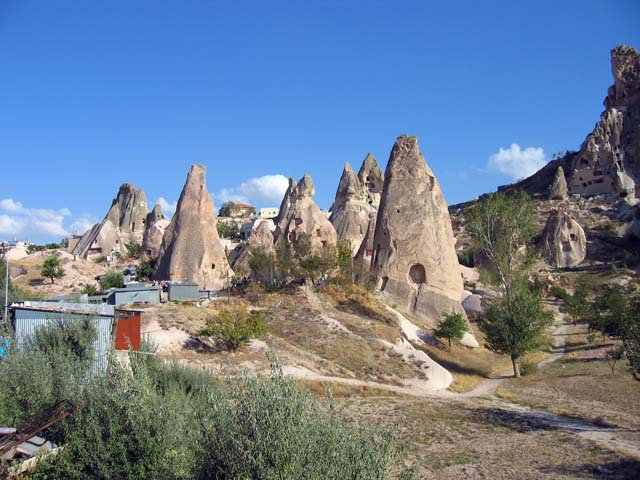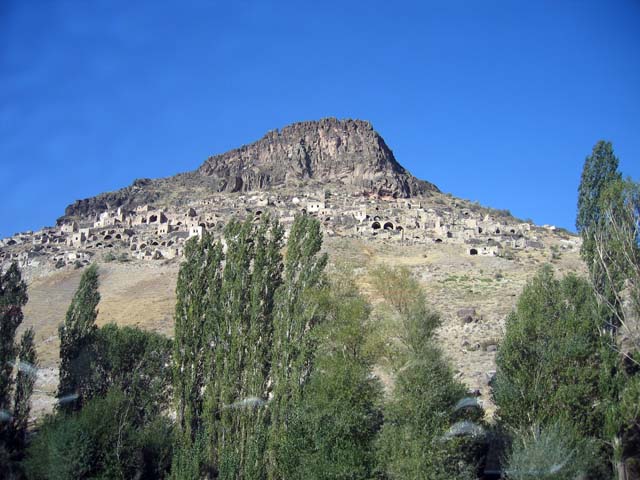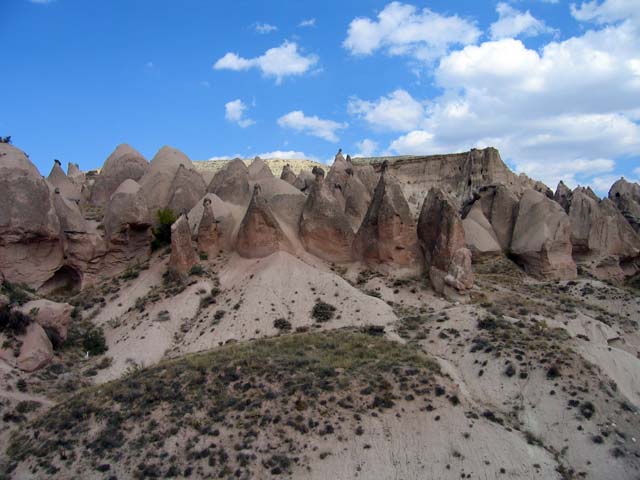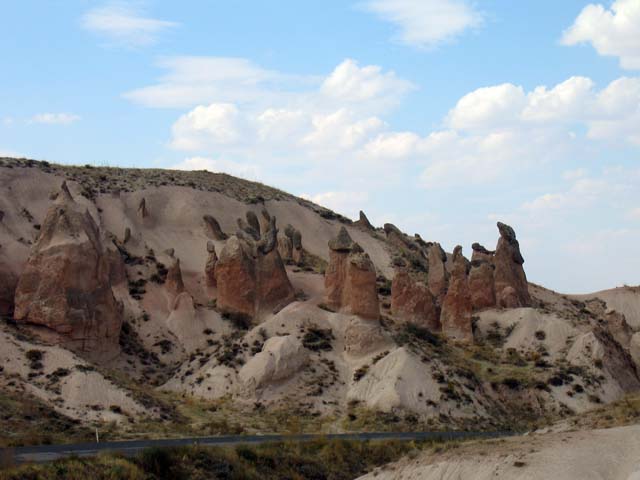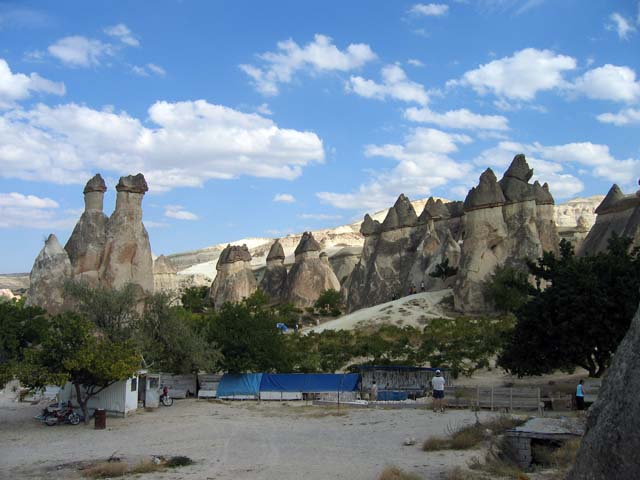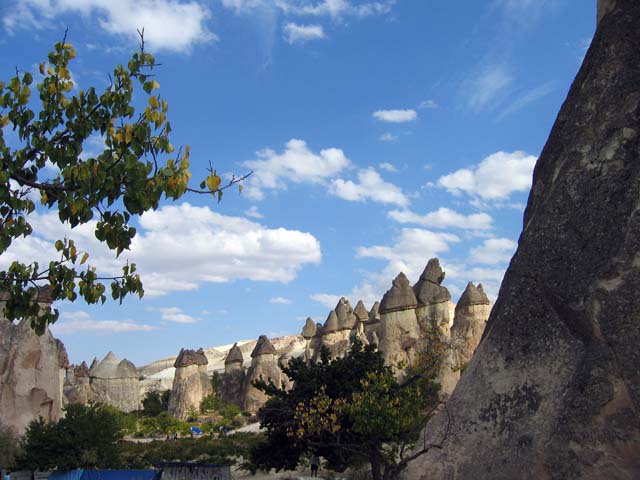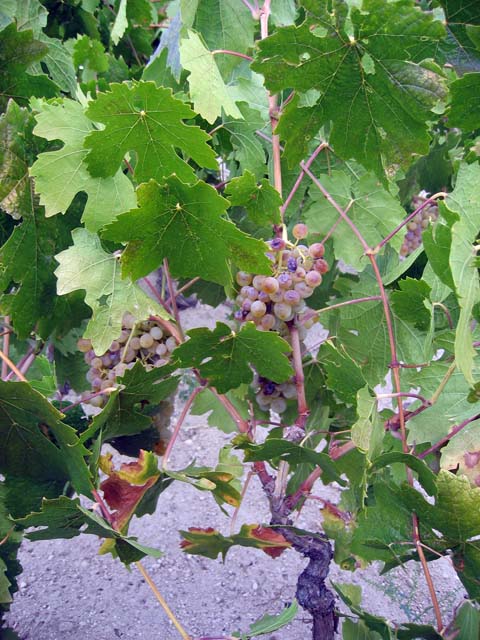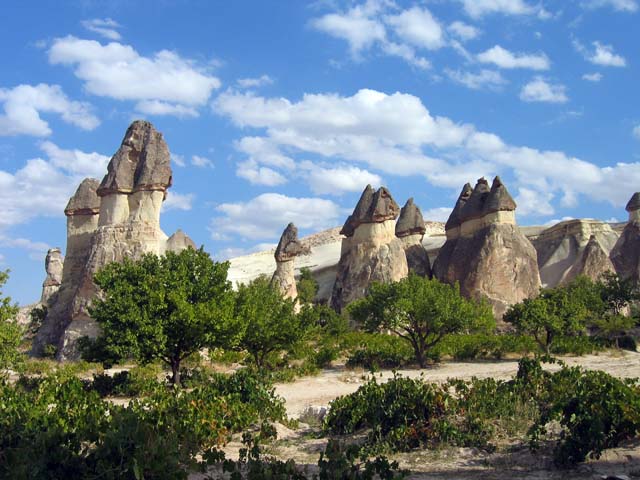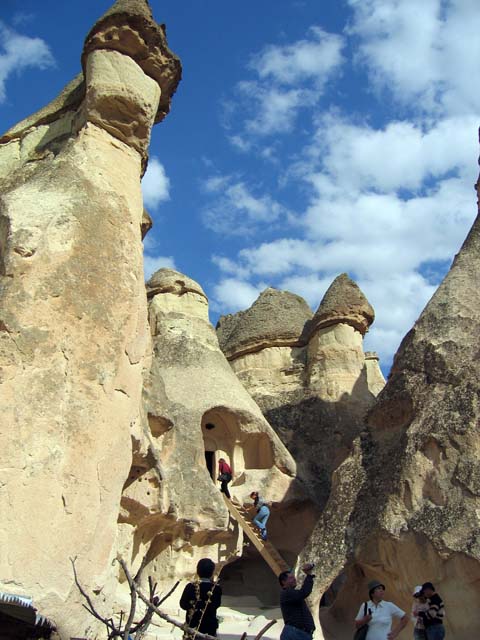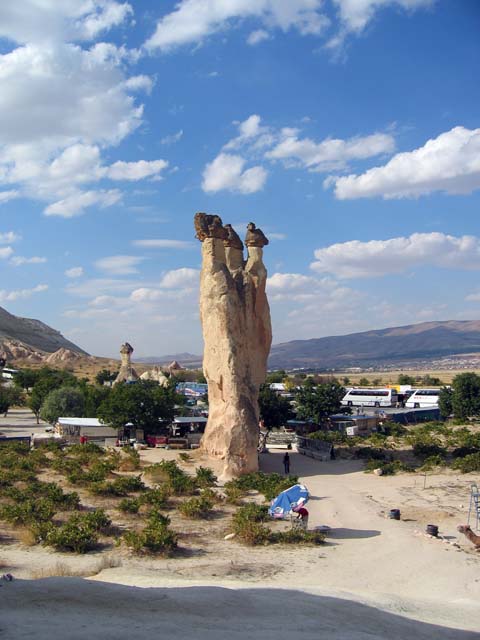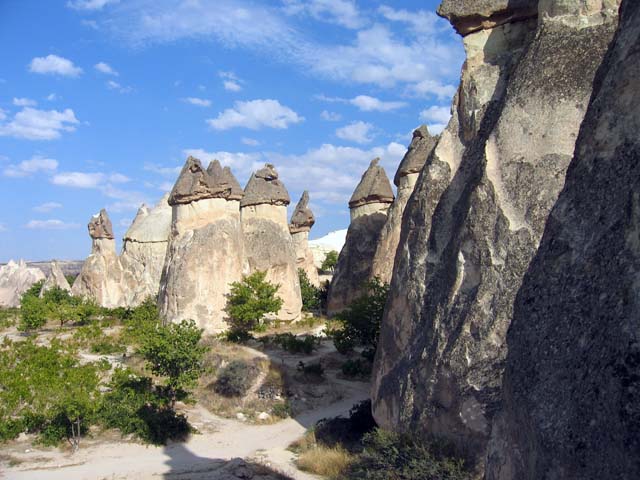|
The landscape of Cappadocia was created around 30 million years ago, when erupting volcanoes blanketed the region with ash.
The ash solidified into an easily eroded material called "tuff," overlain in places by layers of hard volcanic rock.
Over time, the tuff was worn away, creating distinctive formations, including the capped-cone "fairy chimneys" near Ürgüp.
The Göreme Valley holds the greatest concentration of rock-cut chapels and monastaries in Cappadocia.
This is the Göreme Open-Air Museum. There are about 365 churches and chapels carved into the rock here. Enough for a visit to one a day for a full year.
Dating largely from the 9th century onwards, the valley's churches were built by cutting rooms out of the soft volcanic tuff.
Many of the churches feature superb Byzantine frescoes depicting scenes from the Old and New Testaments, and particularly the life of Christ and deeds of the saints.
This is the Barbara Church. The church takes its name from that fresco on the west wall, which is thought to depict St. Barbara.
Tourists going to church.
The cultural importance of the valley has been recognized by the Turkish government.
It's all a museum now.
All of us can fit inside a room in the monastery.
UNESCO has declared the Göreme Valley a World Heritage Site.
The place swarms with tourists.
A pretty view.
Wendy steps back out into the sun.
Quick! Snap a picture with no tourists!
An incredible view.
Bill takes in the incredible view.
This is the Kızlar Monastery. Monks lived and worked in this hollowed-out formation. Ladders or scaffolding were probably used to reach the upper levels.
We're making our way back toward the bus, but first, one more stop.
The Tokalı Church, located near the entrance to the museum, contains some of the most beautiful frescoes in the Göreme Valley.
Oh look! A camel for the tourists!
Souvenirs, too! Oh, boy!
This is an eroded tuff field.
In the triangle defined by Neveşir, Ürgüp, and Avanos, the tuff layer was originally up to 328 feet thick.
As the older tuff continues to erode, younger cones are formed.
The process has been taking place for around 10 million years.
This area is definitely protected from the evil eye.
Roadside scene. We're on our way to a tourist trap that sells jewelry.
Mete knew just the place to stop along the way for some great views of the rock formations.
Everybody piles out of the bus, and guess what? There are souvenir stands.
And a great view.
It looks almost organic to me.
Is that the volcano in the distance that caused all this? Maybe. I'm not sure. The actual volcano, Mount Erciyes, was worshipped by the Hittites. They called it "Harkassos," (White Mountain).
I've wandered far from the bus to get these pictures.
I'd better make my way back before somebody misses me.
Oh look! A Japanese tourist on a camel!
More ancient apartment complex.
Mere bungalows.
Hey, that looks like fun! I've signed up for a ride tomorrow morning.
A city in a hill.
Now we're near Ürgüp.
The pedestal shape is created when a lump of basalt rests atop a tuff column.
Like that. Mete says the figure on the right looks like the Virgin Mary.
More fairy chimneys.
This is just plain weird.
So lets get lots of pictures.
I mean, one picture would do, but this is so completely outside my experience, I can't stop snapping the camera's shutter.
The little bushes -- close to the ground -- are grapevines. Really.
Cappadocia's extraordinary landscape is partly the result of erosion by water, wind and changes in temperature.
Rainfall and rivers wear down the tuff and, like the wind, carry away loose material. In winter, extreme temperature changes cause the rocks to expand and contract and eventually to disintegrate.
A little house where you can sit and watch the grapes grow.
More grapevines.
See? I told you. Grapes.
And it was right about here that I started telling everybody I wasn't going to take another picture of a rock.
OK, I'll take this picture, but that's it.
Seriously, I've taken quite enough pictures of people climbing into and out of man-made caves.
And I certainly don't need any more pictures of fairy chimneys.
So that's it. I quit. No more pictures.
OK, but that's the last one.
|

